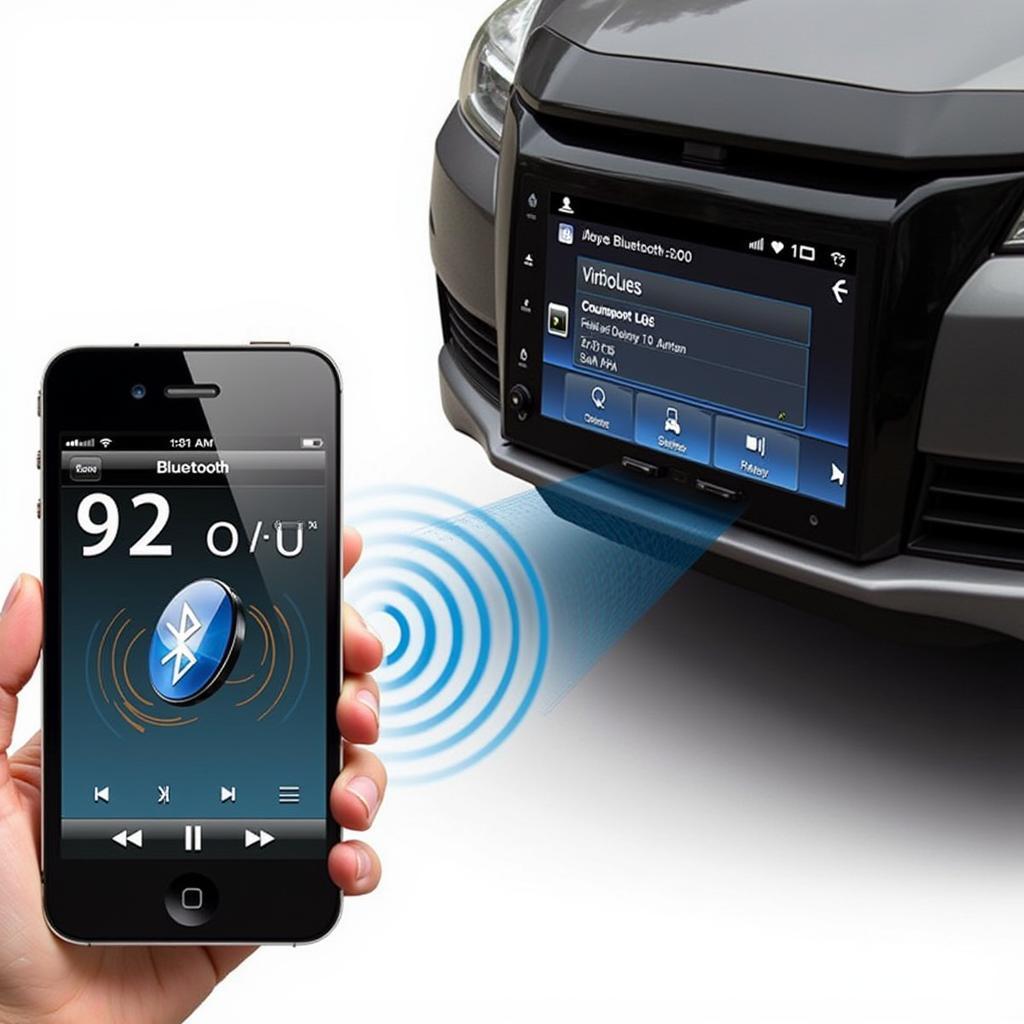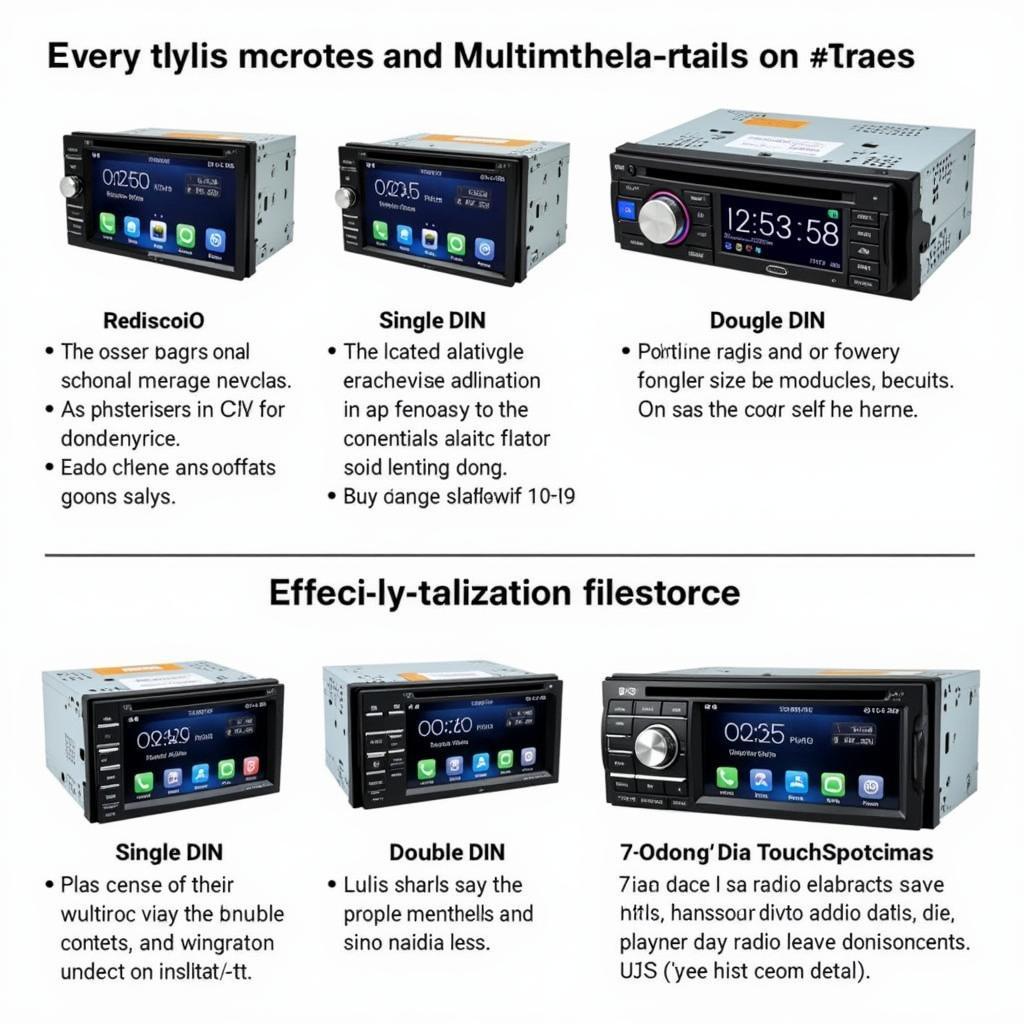“Having a senior moment? Can’t remember which wire goes where on your Pioneer car radio?” We’ve all been there. Fiddling with a tangle of wires can be frustrating, especially when you just want to get your music pumping. Understanding your Pioneer car radio wiring colours is key to a smooth installation.
Decoding the Colourful World of Car Radio Wiring
Your car radio isn’t just about blasting your favourite tunes; it’s a complex system of wires that connect to your car’s electrical system, powering speakers, antennas, and more. Each wire colour in the Pioneer wiring harness represents a specific function, and mixing them up can lead to malfunction or even damage.
Common Car Radio Wiring Issues
A faulty car radio can be more than just an annoyance. Here are some frequent problems you might encounter:
- No sound: This is often due to incorrectly connected speaker wires or a problem with the amplifier.
- Radio won’t power on: This could indicate a problem with the power wire connection, a blown fuse, or even an issue with the car’s ignition switch.
- Poor reception: This often points to a problem with the antenna connection or the antenna itself.
- Intermittent sound: This can be a symptom of loose wiring, a faulty ground connection, or even a problem with the radio unit itself.
Troubleshooting Your Pioneer Car Radio
Before you dive into a world of wires, it’s crucial to identify if the problem is with the wiring or the head unit itself.
Software or Hardware Issue?
Modern car radios are essentially specialized computers. “Many issues that were once attributed to faulty wiring are now rooted in software glitches,” says automotive electronics expert, Dr. James O’Reilly, author of “Automotive Electronics Demystified”. Using a diagnostic tool, like those offered by Cardiagtech, can help pinpoint whether you’re dealing with a software bug or a hardware malfunction.
Getting Hands-On
If the issue lies in the wiring, a visual inspection is your first step. Look for any loose, damaged, or disconnected wires.
Essential Tools
Having the right tools can make all the difference:
- Wiring diagram: This is your roadmap, providing a visual guide to the wire colours and their functions. You can usually find these online or in your car’s service manual.
- Multimeter: This handy tool helps you test for continuity and voltage, essential for diagnosing wiring issues.
- Wire strippers/cutters: For making clean cuts and stripping insulation off wires.
- Electrical tape: Use this to insulate and secure your connections.
The Pioneer Colour Code
While specific colours might vary slightly between models, here’s a general guide to Pioneer car radio wiring colours:
- Yellow: Constant 12V power supply (directly connected to the car battery)
- Red: Switched 12V power supply (turns on when you turn on the ignition)
- Black: Ground wire (connects to the car’s chassis)
- Blue/White: Power antenna or amplifier remote turn-on
- Grey: Front left speaker (+)
- Grey/Black: Front left speaker (-)
- White: Front right speaker (+)
- White/Black: Front right speaker (-)
- Green: Rear left speaker (+)
- Green/Black: Rear left speaker (-)
- Purple: Rear right speaker (+)
- Purple/Black: Rear right speaker (-)
FAQs: Pioneer Car Radio Wiring
Q: Can I install a new Pioneer radio myself?
A: Absolutely! With the right tools, a bit of patience, and a good understanding of the wiring, you can install your own Pioneer car radio.
Q: What if my car’s wiring colours don’t match the Pioneer harness?
A: You’ll need a wiring harness adapter specific to your car model. This ensures compatibility and simplifies the installation process.
Q: My radio has no sound, but the wiring seems fine. What could be wrong?
A: The problem might lie with the head unit’s internal amplifier or the speakers themselves. Consider using a diagnostic tool to pinpoint the issue.
Need a Helping Hand?
Dealing with car electronics can be complex. Cardiagtech offers advanced diagnostic and programming solutions for automotive professionals and DIY enthusiasts. Contact us today for support and explore our range of products to tackle any automotive electronic challenge.



